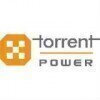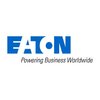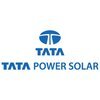Filter interviews by
Adani Power Interview Questions and Answers
151 Interview questions
RCC stands for Reinforced Cement Concrete, a composite material used in construction for its strength and durability.
RCC combines concrete's compressive strength with steel's tensile strength.
Commonly used in beams, columns, slabs, and foundations.
Example: RCC is used in constructing bridges and high-rise buildings.
The reinforcement is typically provided by steel bars (rebar) or mesh.
RCC structures can withstand v...
The density of cement typically ranges from 1440 to 1500 kg/m³, affecting its strength and performance in construction.
Density of Ordinary Portland Cement (OPC) is approximately 1440 kg/m³.
Higher density cements, like heavyweight cement, can exceed 2000 kg/m³.
Density influences the weight of concrete; for example, a cubic meter of concrete weighs around 2400 kg.
Cement density can vary based on composition and mois...
M 10 refers to a specific grade of concrete mix with a characteristic compressive strength of 10 MPa.
M 10 concrete mix consists of a ratio of 1:3:6 (Cement: Sand: Aggregate).
It is commonly used for non-structural applications like footpaths and pavements.
M 10 is not suitable for structural elements like beams or columns due to its low strength.
The 'M' in M 10 stands for 'Mix', while the number indicates the charac...
Chemical safety involves practices to prevent accidents and exposure to hazardous substances in various environments.
Personal Protective Equipment (PPE): Use gloves, goggles, and masks when handling chemicals.
Proper Storage: Store chemicals in labeled containers and in appropriate conditions (e.g., temperature, humidity).
Material Safety Data Sheets (MSDS): Always refer to MSDS for information on handling, hazards,...
Endothermic reactions absorb heat, while exothermic reactions release heat during chemical processes.
Endothermic reactions require energy input, often in the form of heat.
Example: Photosynthesis, where plants absorb sunlight to convert CO2 and water into glucose.
Exothermic reactions release energy, usually as heat, to the surroundings.
Example: Combustion of fuels, like burning wood or gasoline, which releases heat...
An interlock is a safety mechanism that prevents equipment operation under unsafe conditions.
Interlocks ensure that machinery cannot operate unless certain conditions are met.
For example, a door interlock prevents a machine from running if the door is open.
They are commonly used in industrial settings to enhance safety.
Another example is a pressure interlock that stops a process if pressure exceeds safe limits.
Pumps are mechanical devices used to move fluids by converting mechanical energy into hydraulic energy.
Centrifugal pumps: Use rotational energy to move fluids; common in water supply systems.
Positive displacement pumps: Move fluid by trapping a fixed amount and forcing it into the discharge; examples include gear and diaphragm pumps.
Peristaltic pumps: Move fluids through a flexible tube by compressing it; often us...
A servo motor is a rotary actuator that precisely controls angular position using feedback mechanisms.
Servo motors consist of a motor, a feedback device, and a controller.
They use closed-loop control systems to maintain desired position and speed.
Commonly used in robotics, CNC machinery, and automated systems.
Examples include RC servos in remote-controlled cars and industrial robots.
A Charge-Coupled Device (CCD) converts light into electronic signals for imaging applications.
CCD consists of an array of capacitors that store charge.
When light hits the CCD, it generates electron-hole pairs.
The stored charge is transferred through the device to create an image.
Used in cameras, telescopes, and scanners for high-quality imaging.
Example: Digital cameras use CCD sensors for capturing high-resolution...
A near miss is an incident that could have resulted in an accident or injury but did not, often highlighting safety risks.
Near misses are often referred to as 'close calls' or 'near accidents'.
Example: A worker slips but catches themselves before falling.
They provide valuable insights for improving safety protocols.
Reporting near misses can help prevent future accidents.
Example: A machine malfunctions but no one i...
Adani Power Interview Experiences
264 interviews found
I applied via LinkedIn and was interviewed in Apr 2024. There were 2 interview rounds.
(1 Question)
- Q1. Production knowledge
(3 Questions)
- Q1. Current salary in monthly
- Ans.
My current salary is $8,000 per month.
My current salary is $8,000 per month
I am currently earning $8,000 monthly
My monthly salary is $8,000
- Q2. Previous company
- Q3. Work experience
Interview Preparation Tips
I appeared for an interview in Mar 2025, where I was asked the following questions.
- Q1. What is your about
- Q2. What is your responsibility
- Ans.
As an ITI Electrician, my responsibilities include installation, maintenance, and troubleshooting of electrical systems and equipment.
Install electrical wiring and fixtures in residential and commercial buildings.
Perform routine maintenance on electrical systems to ensure safety and efficiency.
Troubleshoot electrical issues, such as short circuits or faulty wiring, and implement effective solutions.
Read and interpret b...
Interview Preparation Tips
(5 Questions)
- Q1. Highest qualification of your
- Ans.
Bachelor's degree in Human Resources Management
Bachelor's degree in HRM from a reputable university
Specialized coursework in employee relations and labor laws
Hands-on experience in handling employee grievances and conflicts
Certifications in conflict resolution and mediation
Continuous learning and professional development in the field
- Q2. What are the best experience of energy plant
- Ans.
Working at an energy plant provides hands-on experience with cutting-edge technology and the opportunity to contribute to sustainable energy production.
Hands-on experience with operating and maintaining energy production equipment
Opportunity to work with cutting-edge technology and innovative solutions
Contribution to sustainable energy production and environmental conservation
Collaboration with a diverse team of engine...
- Q3. What are the increase of production
- Ans.
Increasing production involves optimizing processes, improving efficiency, and maximizing resources.
Implementing lean manufacturing principles to reduce waste and improve productivity
Investing in automation technology to streamline operations
Training employees to enhance skills and knowledge for better performance
Utilizing data analytics to identify bottlenecks and areas for improvement
Collaborating with suppliers to e...
- Q4. What are the expect of salary for these companies
- Q5. What should be work from these companies
What are the increase of production
(5 Questions)
- Q1. Rules and safety
- Ans. Done
- Q2. Salery package and comfrom
- Q3. No question issue
- Q4. No question problem
- Q5. No question problem answer
Interview Preparation Tips
(3 Questions)
- Q1. Pouch packing operetor 5year
- Q2. Pouch packing operetor
- Q3. Oill packing operetor 5year
I appeared for an interview in Dec 2024.
Yes I am skilled person
(5 Questions)
- Q1. Yes I am interested to job
- Q2. Adani group vishakha glass pvt Ltd
- Q3. TATA Steel jamshedpur jharkhand
- Q4. AM/NS arcelor mittal
- Q5. L&T company gurgaon haryana
I appeared for an interview in Dec 2024, where I was asked the following questions.
- Q1. What is your self introduction ?
- Q2. Work your self experience
Interview Preparation Tips
I applied via Company Website and was interviewed in Nov 2024. There was 1 interview round.
(4 Questions)
- Q1. Fighting hydrat post what
- Q2. What are you spray line work
- Ans.
Spray line work involves operating and maintaining fire hoses and nozzles to extinguish fires.
Spray line work includes connecting hoses to water sources, aiming nozzles at the base of the fire, and controlling water flow.
Firefighters must be trained in proper techniques for using spray lines to effectively combat fires.
Regular maintenance of hoses and nozzles is essential to ensure they function properly during emergen...
- Q3. What is spry system
- Ans.
A fire protection system that uses water mist to suppress fires
Spray system uses fine water droplets to extinguish fires
It is effective in suppressing fires in enclosed spaces
Commonly used in areas where traditional sprinkler systems may cause water damage
Examples include high-pressure water mist systems and low-pressure water mist systems
- Q4. What Jockey pump work
- Ans.
A jockey pump is a small pump used to maintain pressure in a fire protection system.
Jockey pumps are typically used in conjunction with larger fire pumps to ensure a constant pressure in the system.
They are usually set at a lower pressure than the main fire pump to prevent frequent starts and stops.
Jockey pumps are often used in high-rise buildings, industrial facilities, and other locations where maintaining pressure ...
Interview Preparation Tips
I appeared for an interview in May 2025, where I was asked the following questions.
- Q1. What is density of cement
- Ans.
The density of cement typically ranges from 1440 to 1500 kg/m³, affecting its strength and performance in construction.
Density of Ordinary Portland Cement (OPC) is approximately 1440 kg/m³.
Higher density cements, like heavyweight cement, can exceed 2000 kg/m³.
Density influences the weight of concrete; for example, a cubic meter of concrete weighs around 2400 kg.
Cement density can vary based on composition and moisture ...
- Q2. What is RCC
- Ans.
RCC stands for Reinforced Cement Concrete, a composite material used in construction for its strength and durability.
RCC combines concrete's compressive strength with steel's tensile strength.
Commonly used in beams, columns, slabs, and foundations.
Example: RCC is used in constructing bridges and high-rise buildings.
The reinforcement is typically provided by steel bars (rebar) or mesh.
RCC structures can withstand variou...
- Q3. What is M 10
- Ans.
M 10 refers to a specific grade of concrete mix with a characteristic compressive strength of 10 MPa.
M 10 concrete mix consists of a ratio of 1:3:6 (Cement: Sand: Aggregate).
It is commonly used for non-structural applications like footpaths and pavements.
M 10 is not suitable for structural elements like beams or columns due to its low strength.
The 'M' in M 10 stands for 'Mix', while the number indicates the characteris...
Interview Preparation Tips
I appeared for an interview in May 2025, where I was asked the following questions.
- Q1. Turbine rolling
- Q2. Tdbfp charging and isolet
- Q3. Cep charging and isolet
- Q4. Condenser charging
- Q5. Vaccum pump start
- Q6. Cccw and occw pump
- Q7. Main oil system
- Q8. Eh oil system
- Q9. Seal oil system
- Q10. Hydrogen and CO2 filling and purging
- Ans.
Generator se hydrogen ko purging karne ke liye sabse pahle hydrogen pressure ko 0.5 kg/cm² tak lya jata hai jisse ki kam CO2 cylinder lage.H2 ko remove karne ke liye CO2 gas lgata hai and CO2 ko remove karne ke liye air use Kiya jata hai.phir air ko nikalne ke liye CO2 and CO2 ko H2 se purging Kiya jata hai
- Q11. SCCW system and H2 dryer system
- Ans.
Stater coil cooling water generator binding ko cooling karta hai.and H2 dryer H2 gas ke moisture ko remove karta hai.
- Q12. Hp and LP by pass system
- Q13. HlP and LP turbine
- Q14. Generator and exciter
- Q15. Low pressure heater
- Q16. High pressure heater
- Q17. Dearatore and feedback storage tank
- Q18. PRDS system and aux steam system
- Ans.
PRDS ak station hai jaha steam dusre unit se ati hai and other sorce main steam, could re heat, extraction -4 hai jiska use Auxiliary steam ke roop me hota hai. Unit startup ke liye hota hai.
I applied via Company Website and was interviewed in Sep 2024. There was 1 interview round.
(2 Questions)
- Q1. Why I'm joined your company?
- Ans.
I joined your company because of its reputation for innovative design projects and collaborative work environment.
Impressed by the company's portfolio of successful projects
Excited about the opportunity to work with a talented team of designers
Attracted to the company's focus on creativity and innovation
- Q2. Your best company that's why I'm joined?
- Ans.
I joined your company because of its reputation for fostering creativity and providing opportunities for growth.
Strong reputation for creativity and growth opportunities
Positive company culture and values
Exciting projects and clients
Room for professional development and advancement
Interview Preparation Tips
Thank you sir / ma'am
Aarti Shahu
Top trending discussions






Adani Power Interview FAQs
Some of the top questions asked at the Adani Power interview -
The duration of Adani Power interview process can vary, but typically it takes about less than 2 weeks to complete.
Tell us how to improve this page.
Adani Power Interviews By Designations
- Adani Power Assistant Manager Interview Questions
- Adani Power Electrical Engineer Interview Questions
- Adani Power Deputy Manager Interview Questions
- Adani Power Senior Engineer Interview Questions
- Adani Power Safety Officer Interview Questions
- Adani Power Associate Manager Interview Questions
- Adani Power Civil Engineer Interview Questions
- Adani Power Quality Engineer Interview Questions
- Show more
Interview Questions for Popular Designations
Overall Interview Experience Rating
based on 320 interview experiences
Difficulty level
Duration
Interview Questions from Similar Companies
Adani Power Reviews and Ratings
based on 2.1k reviews
Rating in categories
|
Assistant Manager
1.1k
salaries
| ₹5 L/yr - ₹15.4 L/yr |
|
Deputy Manager
695
salaries
| ₹6 L/yr - ₹19.8 L/yr |
|
Associate Manager
457
salaries
| ₹8.5 L/yr - ₹24.5 L/yr |
|
Senior Engineer
326
salaries
| ₹4.3 L/yr - ₹11.8 L/yr |
|
Manager
248
salaries
| ₹12 L/yr - ₹29.2 L/yr |

Suzlon Group

Adani Group

Torrent Power

Tata Power
- Home >
- Interviews >
- Adani Power Interview Questions














